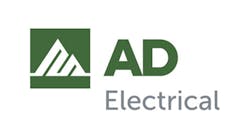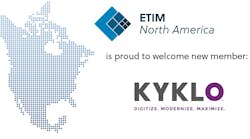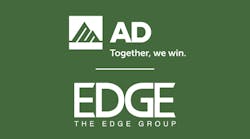By Mike Wentz, Executive Vice President, IDEA
In today’s market, distributors and manufacturers are facing accelerating change and increased customer expectations. As a result, many companies are investing in e-business initiatives, and leaders are seeking information on the financial impact they can expect—both costs and savings.
To help companies make more informed business decisions, IDEA recently worked with Real Results Marketing to develop a new whitepaper, The eBusiness and Economic Benefits of Data Synchronization.
Through interviews and industry analysis, researchers found substantial changes in the supply chain where data synchronization and electronic communication are having a significant impact on businesses. The analysis confirmed operational savings, while also revealing potentially dramatic economic benefits in marketing and customer service that impact revenue, profits and growth.
Growing Revenues and Profits: Economic Modeling Analysis
Developing an analytic model is one of the most effective ways to assess the impact of market changes with the benefits of specific technologies like IDEA Connector (aka the industry data warehouse) and IDEA Exchange (IDEA’s electronic data interchange platform). For this analysis, researchers developed an economic value model (EVM) that provides estimates of financial costs and benefits for typical manufacturers and distributors (small, medium and large) who implement IDEA solutions.
The model is based on modest assumptions about the business, including average orders, the amount of product data used, revenue, number of trading partners, etc.
Financial Return & Benefits
The economic value analysis illustrates that the financial return from IDEA Connector and IDEA Exchange technologies far exceeds the costs of implementing and maintaining the solutions. Bottom-line financial benefits range from five times to over 10 times the investment for smaller manufacturers and distributors. Benefits are even greater for larger organizations, due to more products, customers and transactions. These improvements are measured as a combined result of improving customer loyalty and satisfaction, improving marketing efficiency and return on investment (ROI), as well as improving the ability of the business to upsell and cross-sell more products. Furthermore, the model demonstrates rapid payback and increasing economic benefits over a multi-year time-frame.
Direct Benefits: Productivity & Operational Savings
Sales personnel effectiveness. Better product data frees up time for customer-facing personnel, like sales and customer service representatives (CSR), who are able to pursue more revenue-producing activities with better results.
Product manager productivity. Personnel responsible for creating and maintaining product data are able to manage more products and use product content more effectively across the business.
Operations efficiency. This measures the impact of processing more transactions without requiring additional personnel, which simplifies business growth and scalability while maintaining quality and customer satisfaction.
Indirect Benefits: Sales and Customer Satisfaction
Reduction in errors. Up-to-date and accurate product data dramatically reduces or eliminates ordering errors. The model measures the overall cost of errors to the business and customers, including loss of productivity, delays and lost business.
Marketing lift. Perhaps the largest economic benefit comes from potentially dramatic improvements in marketing-related activities. Marketing activities fueled by high quality product data can have a higher return by improving search performance, customer access to needed information, and opportunities to upsell and cross-sell. This results in happier and more loyal customers as well as increasing the frequency, size and profitability of orders.
Five-year benefits. The benefits are calculated annually and are presented as a five-year cumulative benefit, which may include assumptions in each of the benefit areas. This approach illustrates the positive impacts of the solutions for metrics like sales revenue, customer growth and retention and bottom line profitability.
By combining IDEA’s quality product information with its process automation solutions, the result is a stronger and more streamlined supply chain. This improves the business of all participants: from manufacturers that source products through distributors that make procurement easy to the ultimate end-customers that are empowered to deliver higher quality service.
The whitepaper eBusiness and Economic Benefits of Data Synchronization is available for download at IDEA’s website, idea4industry.com. If you’d like to learn more about how to apply the economic value analysis to your business, call IDEA at 703.562.4600.
Sidebar: Data Sync in the Electrical Industry By the Numbers
IDEA Connector
• Serves over 8,000 distributor locations
• Implemented by 18 of the top 20 distributors on Electrical Wholesaling’s “Top 200” list
• Includes product data for more than 2.5 million SKUs, representing over 2,000 manufacturer brands.
• Manufacturer subscribers include the major players in the electrical industry, representing 85 percent of industry SKUs.
• Provides manufacturers access to a market for contractor business worth over $80 billion.
IDEA Exchange
• Serves just under 300 manufacturers and distributors with several thousand locations.
• Processes over 6.5 million transactions a month
• Process just under 10.5 million kilocharacters a month










